FIBRE TO FABRICS for Class 7 SCIENCE
Introduction
Class 6 mein hamne kuchh aise fabrics ke baare mein padha jo hamein plants se milte hai. Hamne yeh bhi padha ki kuchh fabrics hamein animals se bhi milte hai. Eg- Wool hamein yak ya sheep ke fleece se milta hai, silk fibre hamein silk moth ke cocoons se milta hai. Toh jaise hamne class 6 mein plants se milne wale fibres ke baare mein padha aise hi ab hum animals se milne wale fibres ke baare mein padhenge. Iss chapter mein hum padhenge kounse animal se hamein kounsa fabric milta hai aur inke fibres ko woollen yarn mein kaise convert kiya jata hai. Hum iss chapter mein silk fibres se silk fabrics banane ke process ko bhi detail mein padhenge.
Animal Fibres- Wool And Silk
Wool
Wool hamein sheep, goat, yak aur dusre animals se milti hai. In animals ke body par hairs hote hai. Lekin in animals ki body par hairs ki thick layer kyon hoti hai?
Hairs air ko trap kar lete hai aur air heat ka poor conductor hota hai toh hairs animals ki body ko warm rakhte hai. Aise hairy fibres se hi wool banti hai.Niche figure mein hum dekh sakte hai ki kaise sheep ki body par thick layer of hairs hoti hai.
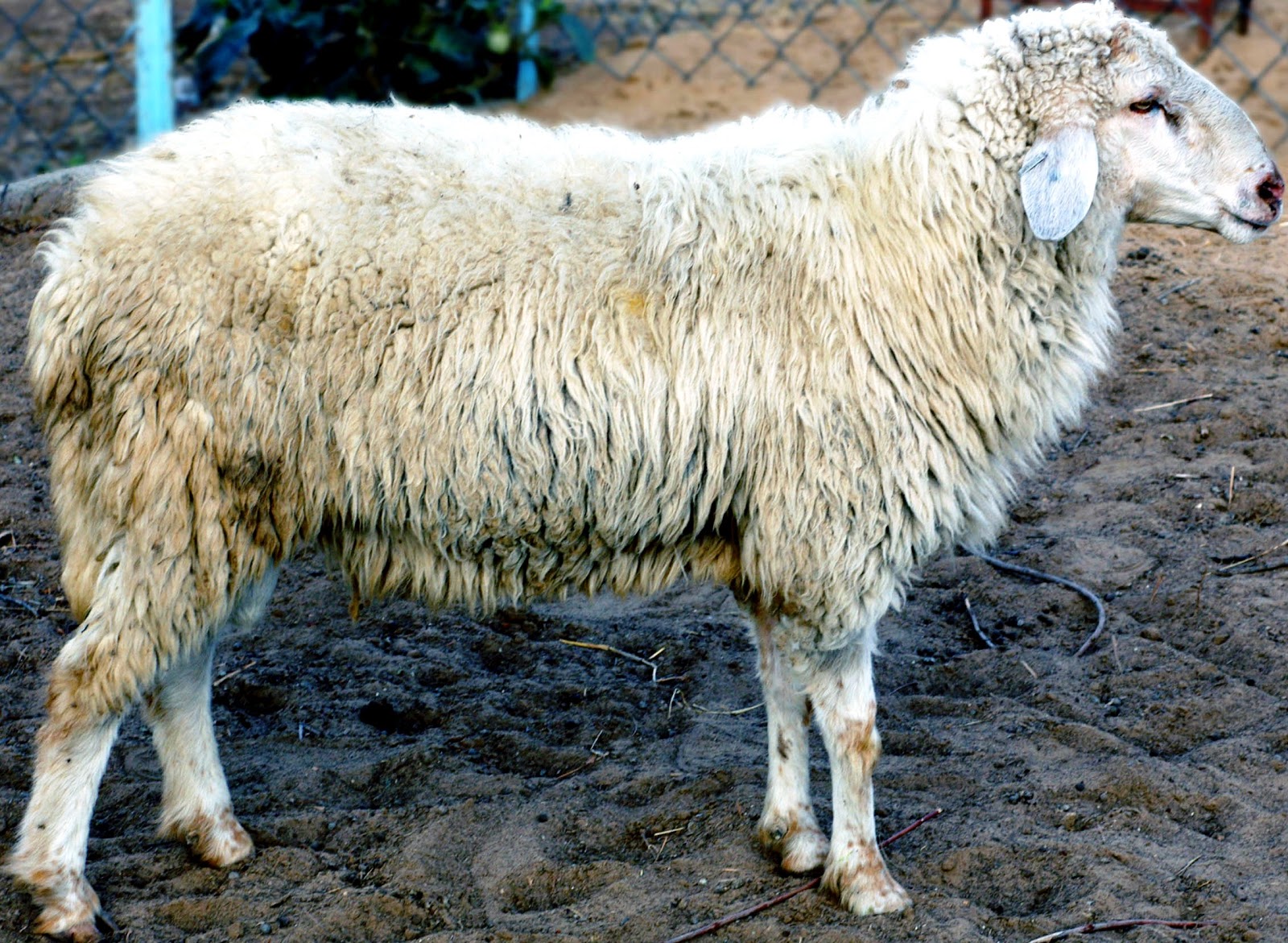
Hum apni body ko bhi observe karein to hamari body par kahi less hairs hai kahi jyada hairs hai aise hi sheep ki hairy skin mein bhi do types ke fibre hote hai jisse uski fleece banayi jati hai.
(i) The coarse beard hair
(ii) The fine soft under-hair close to the skin.
Fine hairs wool banane ke liye fibres provide karte hai. Sheeps ki kuchh breeds aisi bhi hoti hai jinme sirf fine under-hairs hote hai. Aise sheeps only fine under-hair vale sheeps ko hi birth dete hai. Special characters wale parents ko select karne ke process ko ‘selective breeding’ kehte hai.
Animals that yield wool
Different parts of country mein sheeps ki different breeds hoti hai. Sheeps ki different breeds aur unke states aap niche table mein dekh sakte hai.

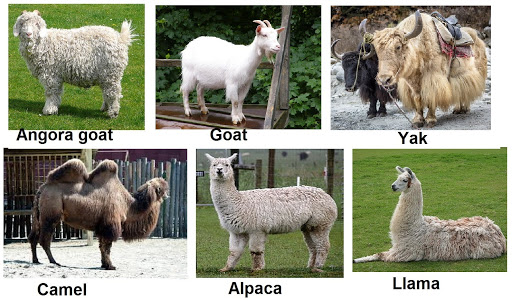
From Fibres To Wool
Ab hum dekhte hai sheep se wool kaise obtain ki jaati hai.
Sheep se wool obtain karne ke liye pehle sheeps ki care care ki jaati hai. Jab vo mature ho jati hai toh unke hairs cut karke wool banane ke liye process kiye jaate hai. Iss process ko ab hum detail mein step by step padhenge.
Rearing and breeding of sheep:
Hum Jammu-kashmir, Himachal pradesh, Sikkim, Punjab, Rajasthan etc. jaise places par jab bhi jaate hai toh hum shepherds ko apni sheeps ke group ko grazing (ghass charaate) karvate hue dekhte hai. Sheeps herbivores hote hai isliye grass aur leaves ko khana prefer karte hai. Iske alawa vo pulses, corn, jowar aur minerals ka mixture bhi khaate hai. Winters mein sheeps ko andar hi rakha jata hai aur unko leaves, grains aur dry fodder khilaya jata hai.
Hamari country mein bahut states mein sheeps ko wool obtain karne ke liye pala jata hai jaisa ki hamne upar table mein bhi dekha. Table mein hamne yeh bhi dekha ki kounsi sheep kaisi quality ka fibre deti hai.
Kuchh sheeps ki breeds aisi hoti hai jis par achhi quality ki wool large quantity mein aati hai aur isko “selective breed” kehte hai.
Ek baar hairs ki thick growth aate hi hairs ko wool obtain karne ke liye shave off kar diya jata hai aur isse fibre obtain kiya jata hai.
Ab hum padhenge ki fibres se wool kaise banayi jaati hai.
Processing Fibres Into Wool
Jo wool hum sweaters aur shawls banane ke liye use karte hai wo fibres se wool banane ke process ka end product hota hai. Ab hum padhenge ki ye process kya hai aur kaise hoti hai.
Step 1: Sheep ki fleece ko skin ki thin layer ke saath remove kiya jata hai. Iss process ko hum shearing kehte hai. Shearing ke liye wo hi same machine use ki jati hai jo barbers hamare hair remove karne ke liye use karte hai.
Usually sheep ke hairs ko hot weather mein remove kiya jata hai taaki vo apne protective coat ke bina survive kar paaye. Hairs se hamein woollen fibres milte hai jisse hum woollen yarn banate hai. Jaise hamein haircut karvate hue ya beard shave off karte time pain nahi hota vaise hi shearing process mein bhi sheep ko hurt nahi hota. Sheep ke skin ki uppermost layer almost dead hoti hai aur hamari tarah unke hairs bhi regrow kar jate hai. Niche figure mein hum shearing ki process dekh sakte hai.
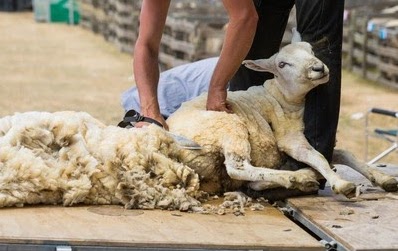
Step 2: Sheared skin mein se grease, dirt aur dust ko remove karne ke liye usko tanks mein achhe se wash kiya jata hai. Iss process ko scouring kehte hai. Aaj-kal yeh process machines se bhi ki jaati hai. See figure

Step 3: Ab hairy skin ko different textures ke hairs separate ya sort karne ke liye factory mein bheja jata hai. Iss process ko sorting kehte hai.
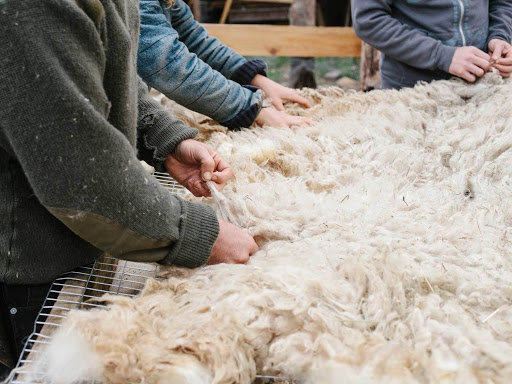
Step 4: Small fluffy fibres jinko burrs kaha jata hai unko hairs se nikala jata hai. Yeh wohi burrs hote hai jo hamein kabhi-kabhi apne sweaters par dikhte hai. Fibres ko dobara scour kiya jata hai aur dry kiya jata hai. Ab wool fibres mein convert hone ke liye ready hai.
Step 5: Ab fibres ko different colors mein dye kiya ja sakta hai kyonki sheep ki fleece ka natural color black, brown ya white hota hai.
Step 6: Ab fibres ko straight kiya jata hai, comb kiya jata hai aur yarns mein roll kar diya jata hai. Long fibres ko sweaters ke liye wool banane mein use kiya jata hai aur short fibres ko spun aur wove karke woollen clothes banaye jate hai.
Yeh poori process hum niche figure ki help se bhi samajh sakte hai.
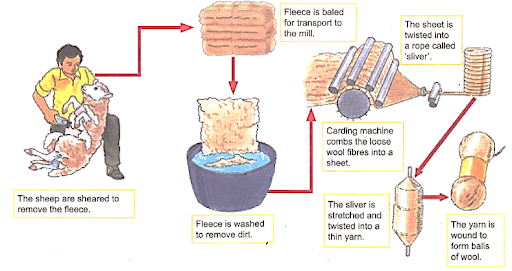

Silk
Silk fibres bhi animal fibres hi hote hai. Silkworms hi silk fibre banate hai. Silkworms ko silk obtain karne ke liye paalne ke process ko sericulture kehte hai. Silk bhi different type ke hote hai. Eg- satin, organza, taffeta etc.
POINT 1
Selective Breeding: Sometimes sheep are selected to gain a breed that has only fine soft hair on the skin and less or no hard hair. This process is called Selective Breeding.
Rearing: The process of keeping, feeding, breeding and medical care of useful animals is called rearing of animals.
Shearing>: It is a process of removing the fleece of the sheep along with a thin layer of its skin.
Scouring:It is a process of removing dirt, grease and dust from the hair removed from the sheep.
Sorting:It is the process of separating the hair of the sheep according to their textures.
Life history of silk moth
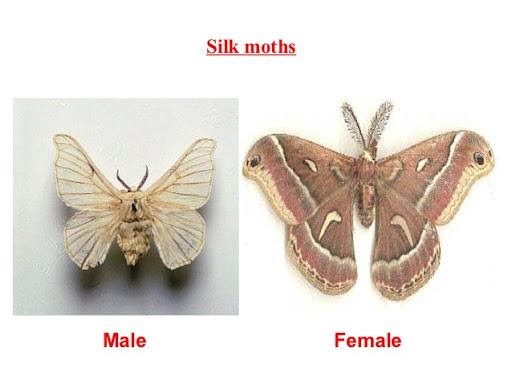
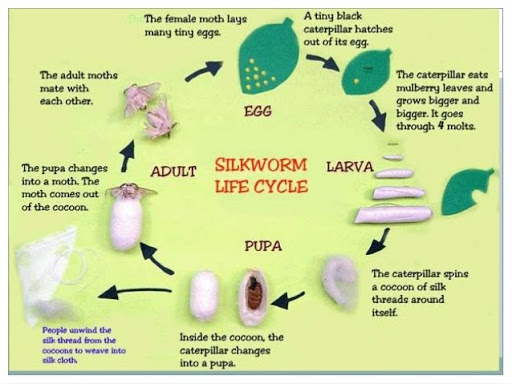
From cocoon to silk
Silk obtain karne ke liye moths ko paala jata hai aur unke cocoons ko silk thread ke liye collect karte hai.
Rearing silkworms:

Processing silk:
POINT 2
Sericulture: It is the process of breeding and raising of silkworms in order to obtain silk from them.
SUMMARY
1. Silk comes from silkworms and wool is obtained from sheep, goat and yak. Hence silk and wool are animal fibres.
2. The hairs of camel, llama and alpaca are also processed to yield wool. n In India, mostly sheep are reared for getting wool.
3. Sheep hair is sheared off from the body, scoured, sorted, dried, dyed, spun and woven to yield wool.
4. Silkworms are caterpillars of silk moth.
5. During their life cycle, the worms spin cocoons of silk fibres.
6. Silk fibres are made of a protein.
7. Silk fibres from cocoons are separated out and reeled into silk threads.
8. Weavers weave silk threads into silk cloth.